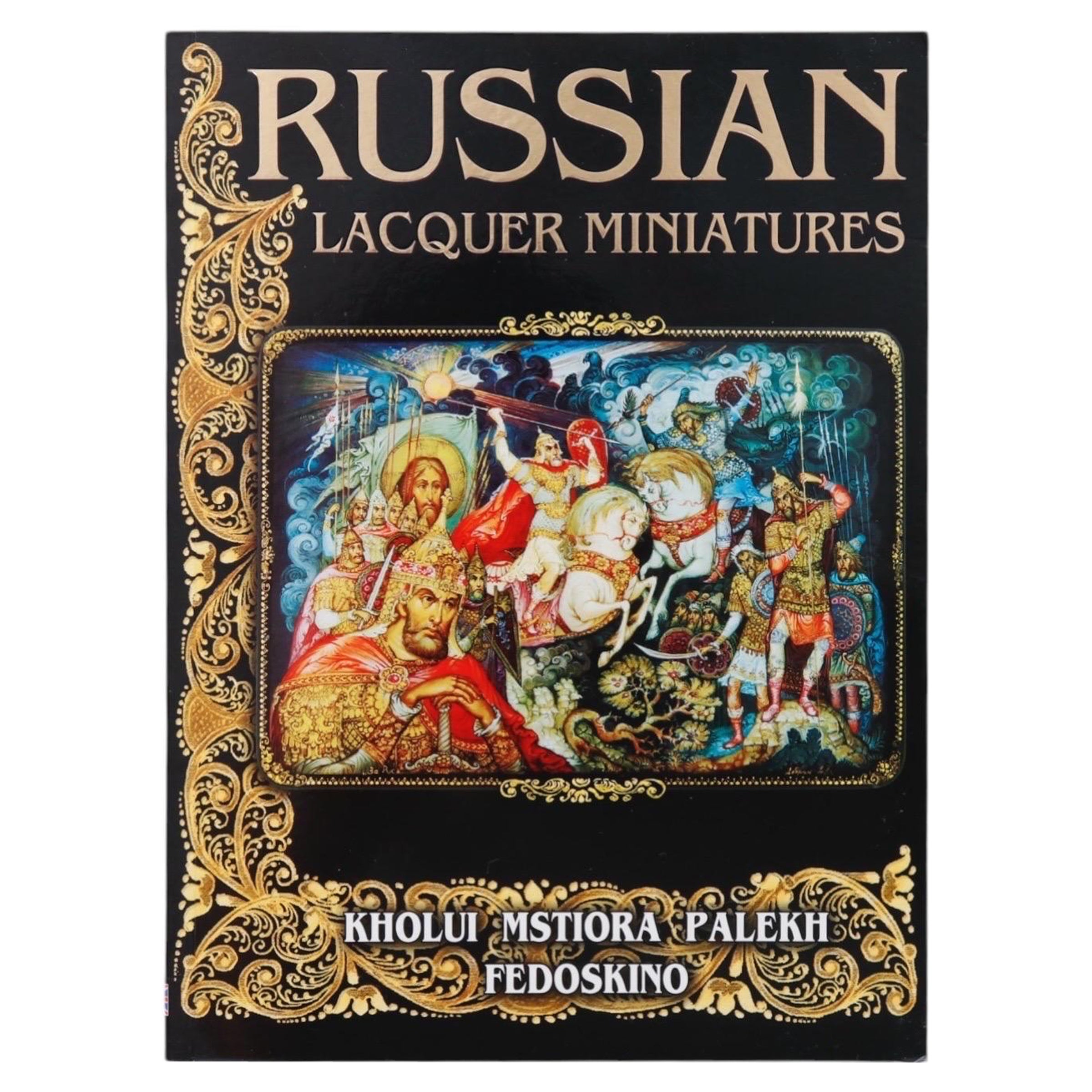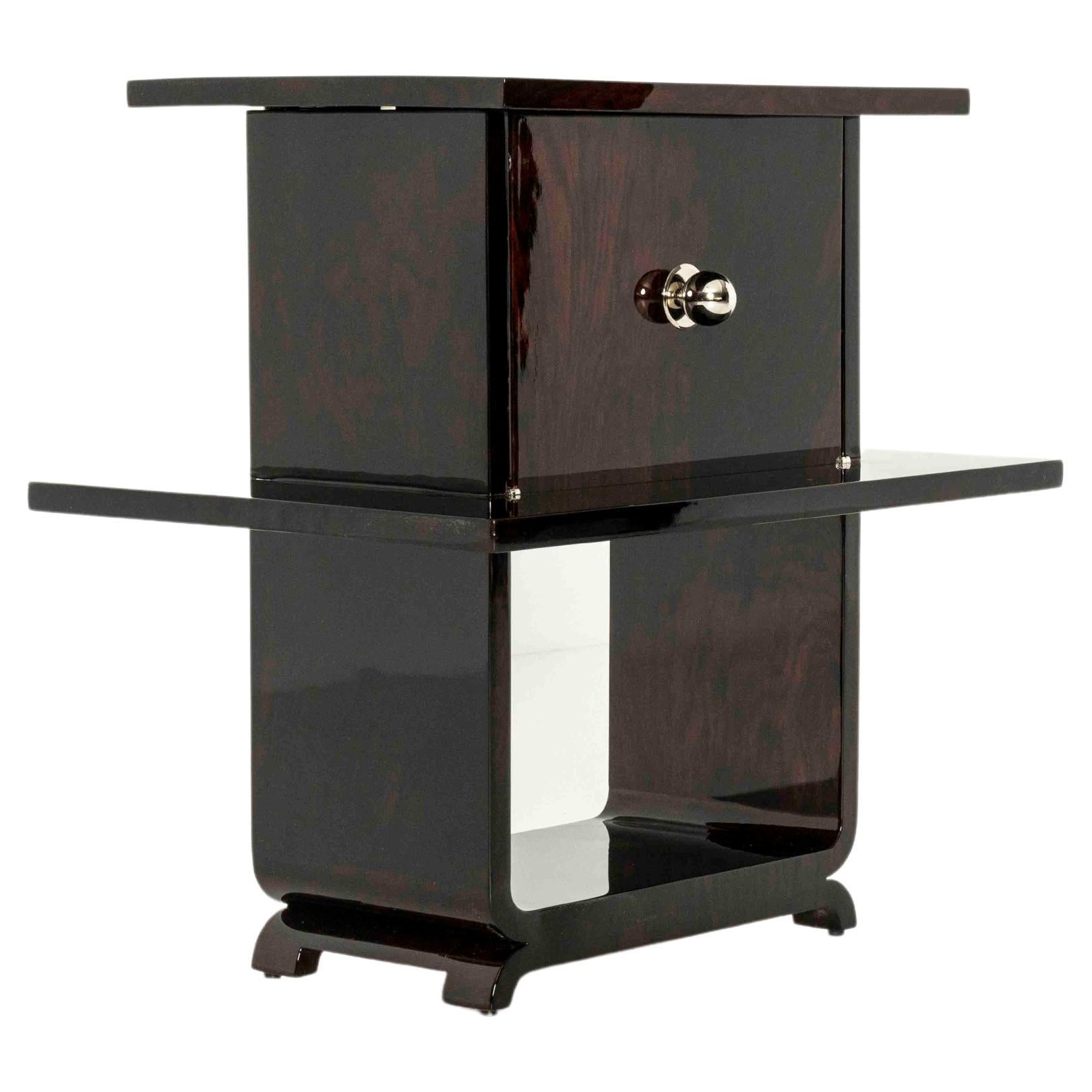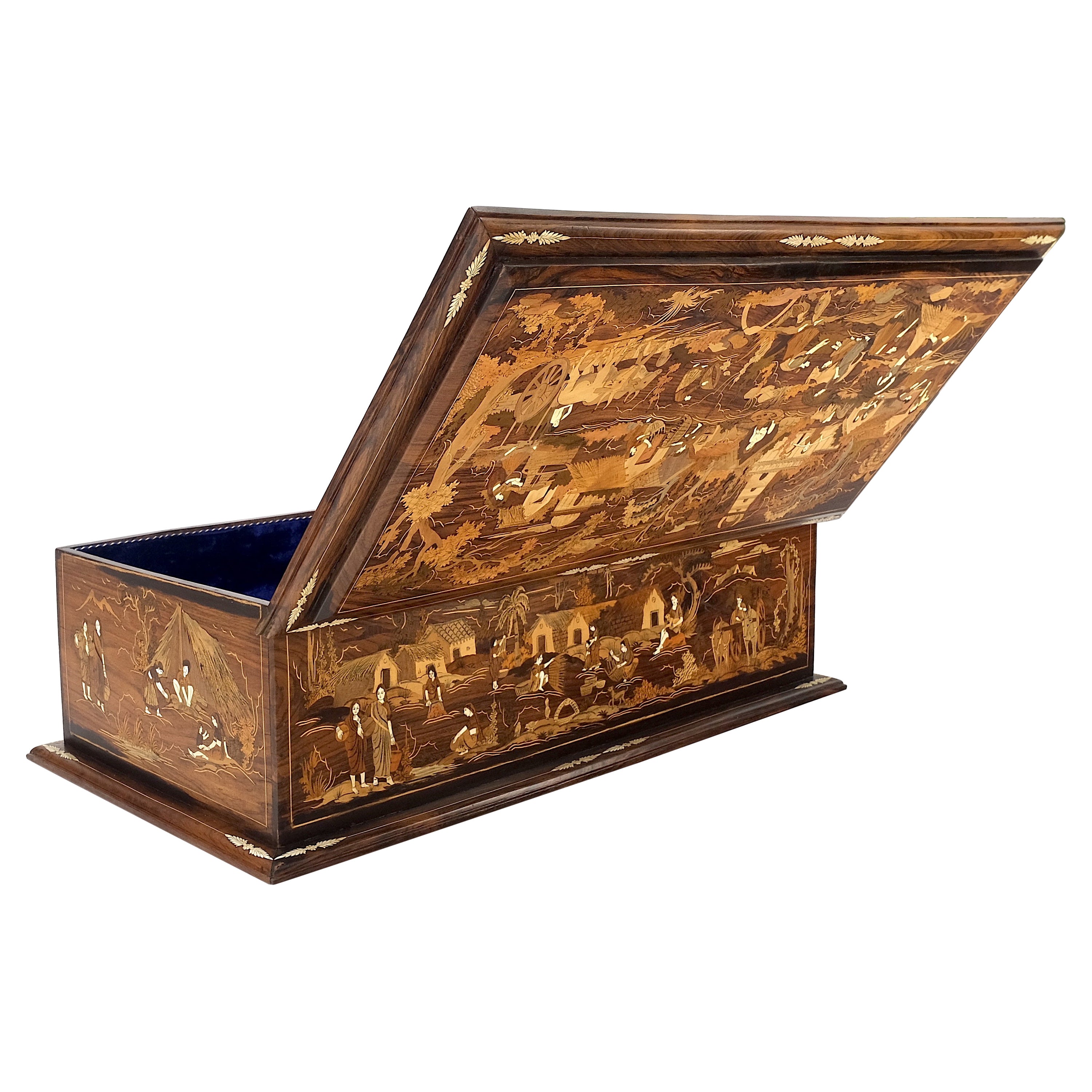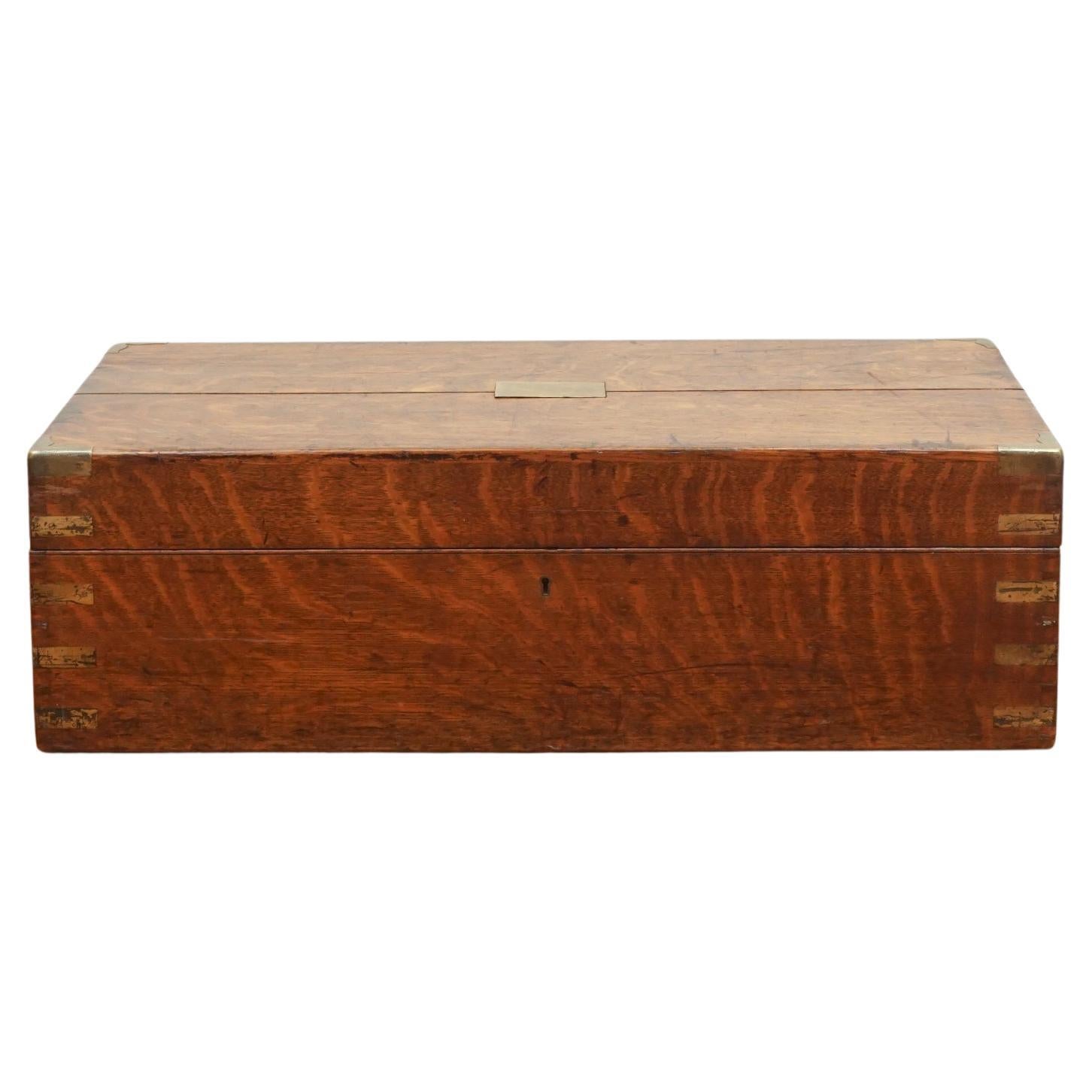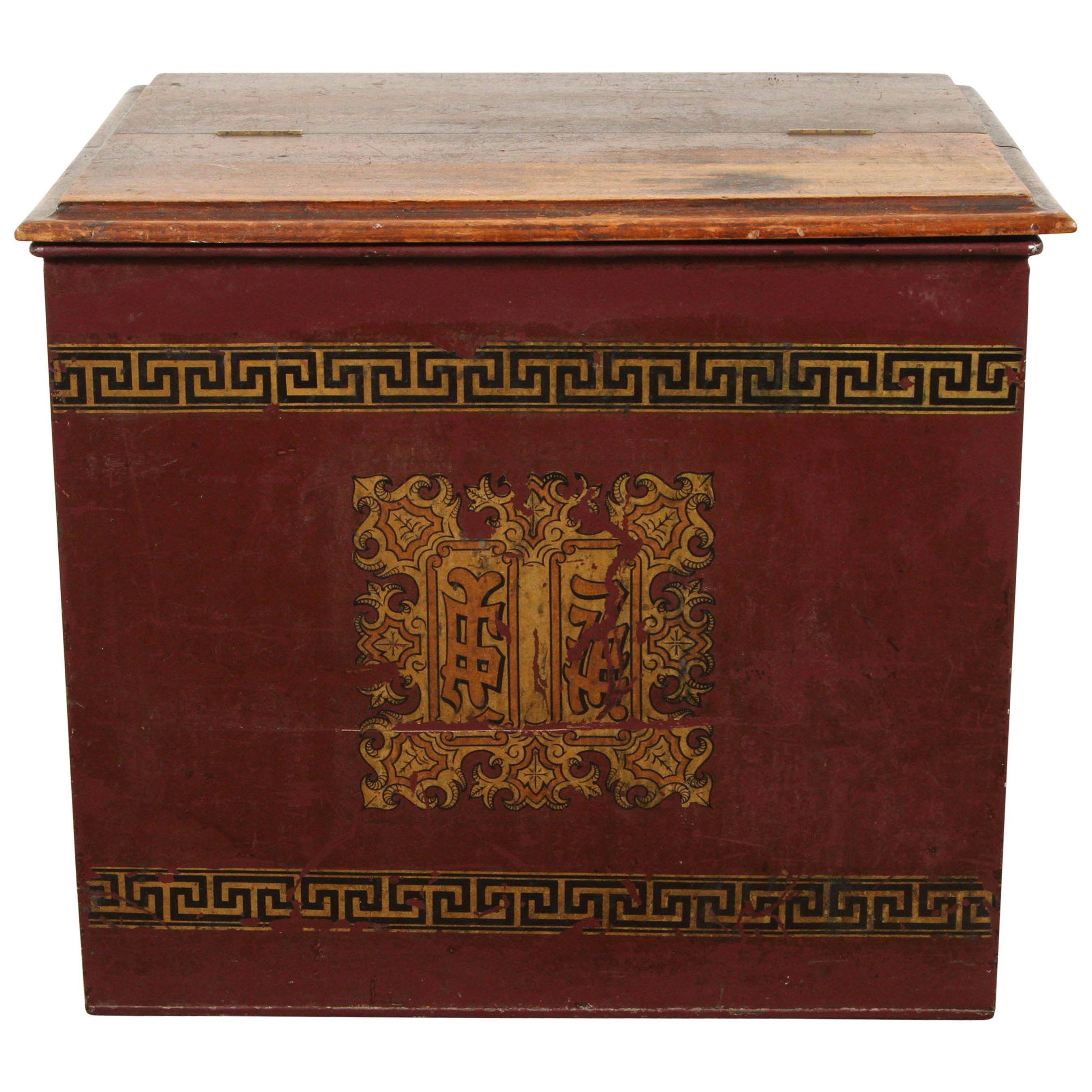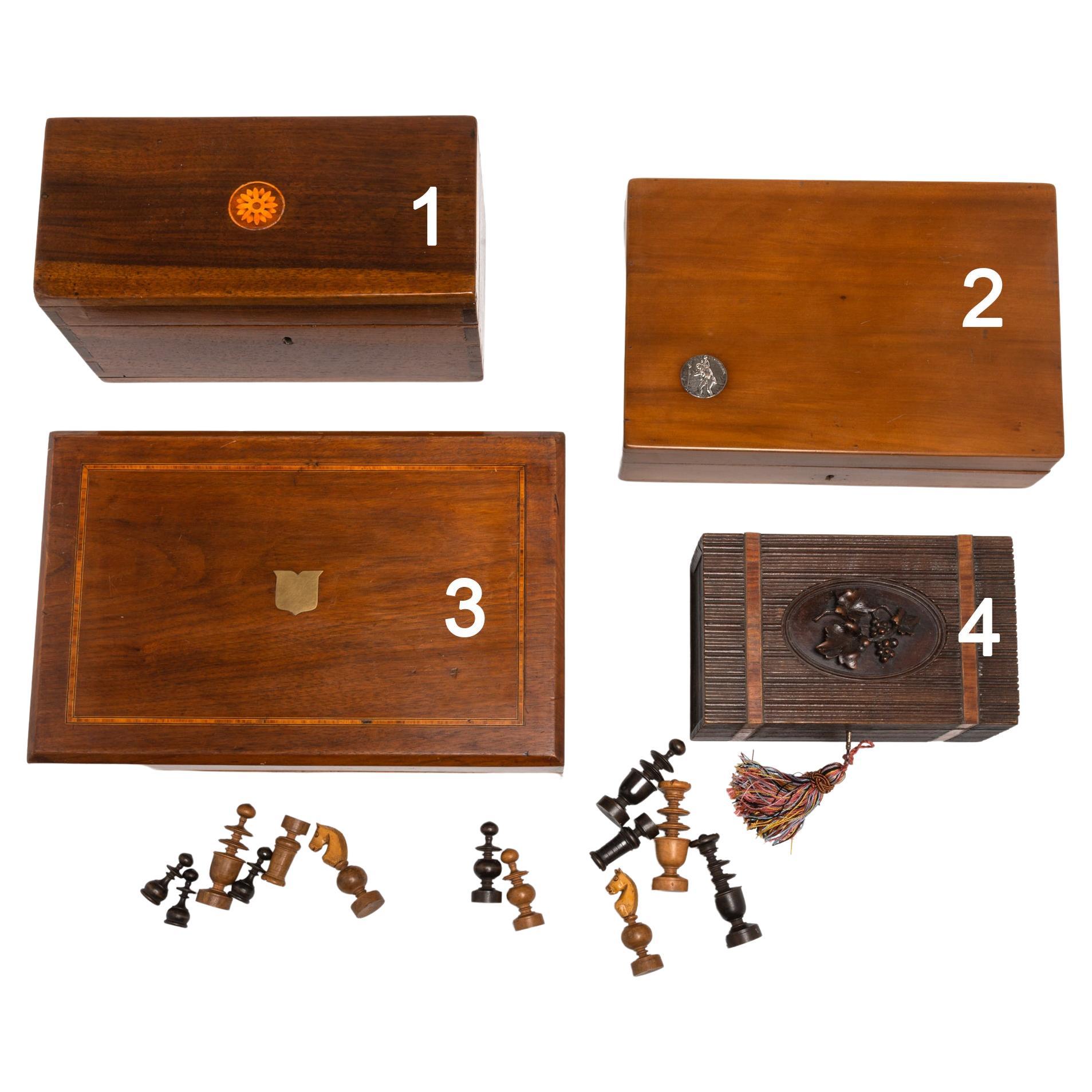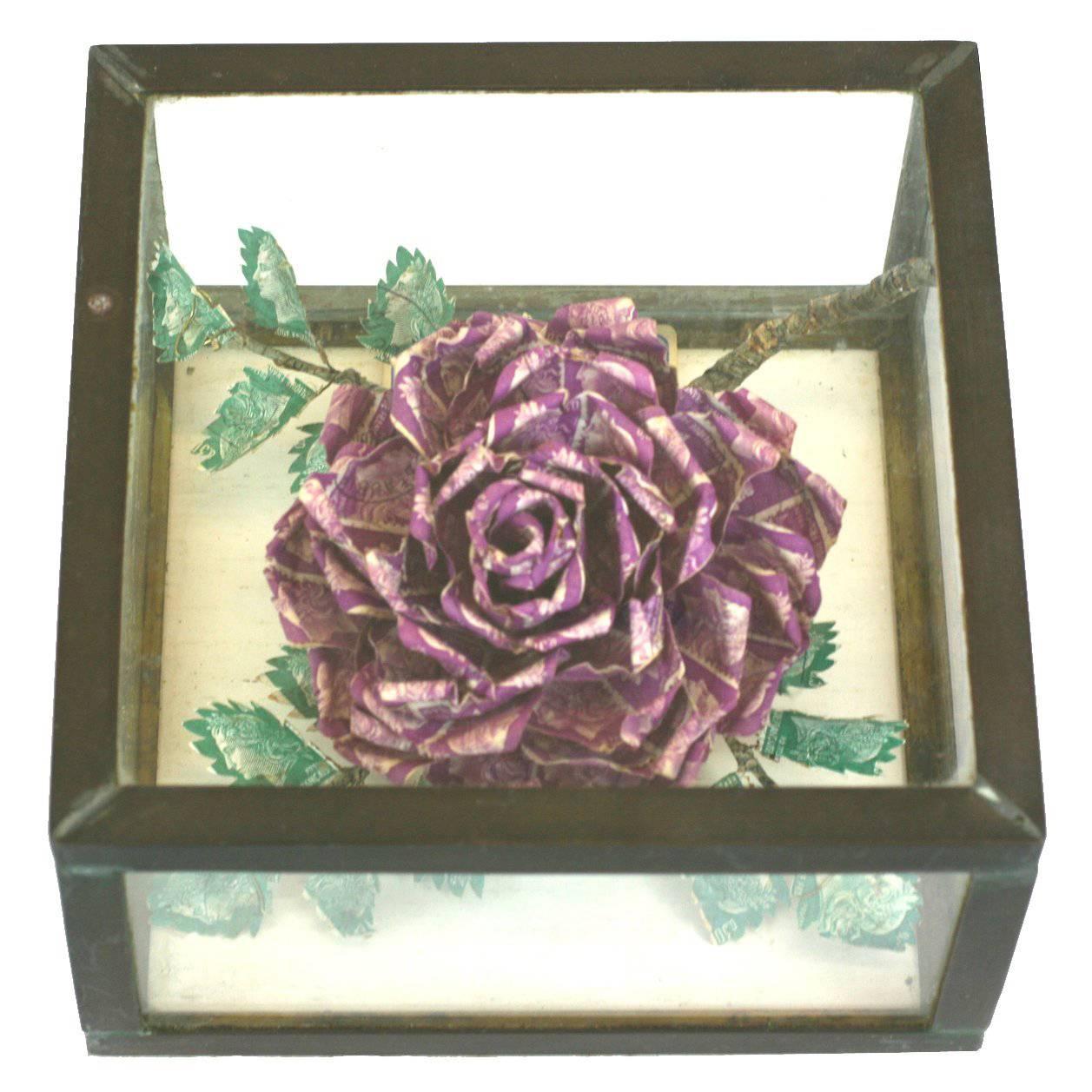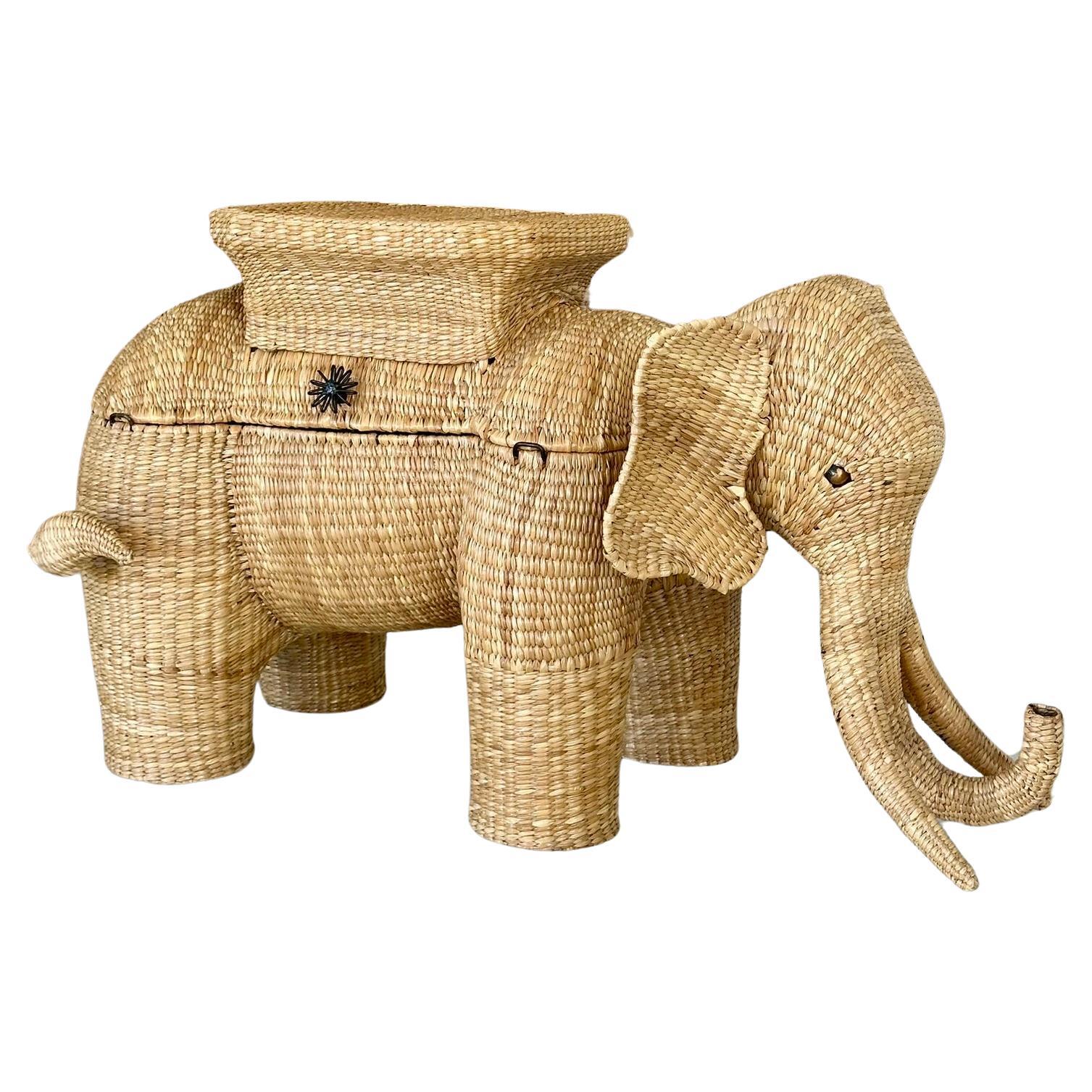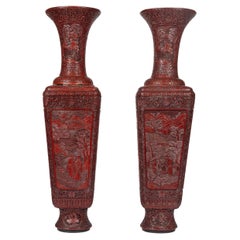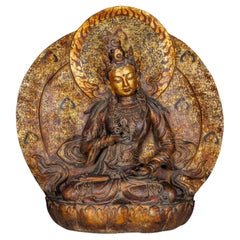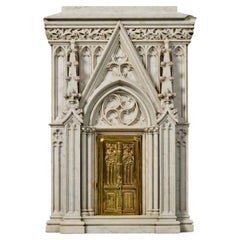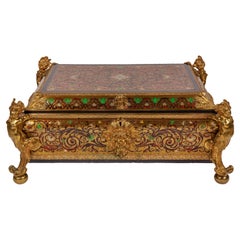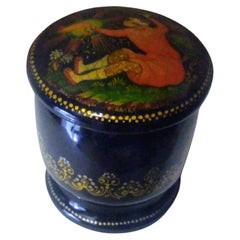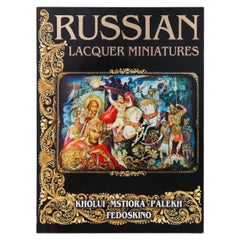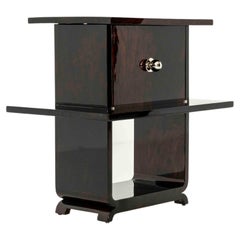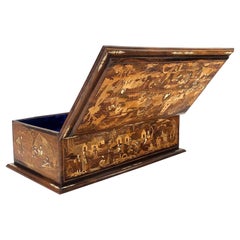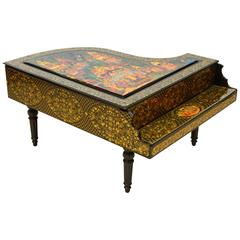
Very Rare & Unusual Russian Lacquer Wood Piano Storage Box Palekh Monumental
View Similar Items
Want more images or videos?
Request additional images or videos from the seller
1 of 11
Very Rare & Unusual Russian Lacquer Wood Piano Storage Box Palekh Monumental
$12,000List Price
About the Item
- Dimensions:Height: 21 in (53.34 cm)Width: 41 in (104.14 cm)Depth: 32 in (81.28 cm)
- Materials and Techniques:
- Place of Origin:
- Period:
- Date of Manufacture:20th Century
- Condition:
- Seller Location:Queens, NY
- Reference Number:1stDibs: f179821603074221293fs
About the Seller
5.0
Vetted Professional Seller
Every seller passes strict standards for authenticity and reliability
Established in 1980
1stDibs seller since 2016
63 sales on 1stDibs
Typical response time: 3 hours
Authenticity Guarantee
In the unlikely event there’s an issue with an item’s authenticity, contact us within 1 year for a full refund. DetailsMoney-Back Guarantee
If your item is not as described, is damaged in transit, or does not arrive, contact us within 7 days for a full refund. Details24-Hour Cancellation
You have a 24-hour grace period in which to reconsider your purchase, with no questions asked.Vetted Professional Sellers
Our world-class sellers must adhere to strict standards for service and quality, maintaining the integrity of our listings.Price-Match Guarantee
If you find that a seller listed the same item for a lower price elsewhere, we’ll match it.Trusted Global Delivery
Our best-in-class carrier network provides specialized shipping options worldwide, including custom delivery.More From This Seller
View AllA Monumental and Rare Pair of Chinese Cinnabar Carved Lacquer Vases, Qianlong
Located in Queens, NY
Introducing an extraordinary and exceptionally rare pair of Chinese Cinnabar Carved Lacquer Vases from the Qianlong period. These monumental vases stand as magnificent examples of Ch...
Category
Antique 19th Century Chinese Lacquer
Materials
Lacquer
A Monumental Gilt-Lacquered Bronze Ornamental Buddha Sculpture of Vajravidarana
Located in Queens, NY
A Monumental Gilt-Lacquered Bronze Ornamental Buddha Sculpture of Vajravidarana:
A Masterpiece of Sino-Tibetan Craftsmanship, Late 19th Century, Qing Dynasty
This monumental gilt-lacquered bronze ornamental sculpture of Vajravidarana is an extraordinary and commanding piece of art, showcasing the pinnacle of Sino-Tibetan craftsmanship from the late 19th century. The figure of Vajravidarana, a powerful purification deity in Tibetan Buddhism, is meticulously sculpted to embody both spiritual authority and artistic excellence.
Vajravidarana is primarily known for his role in removing spiritual impurities and negativities. Unlike other deities associated with wisdom or compassion, Vajravidarana’s function is centered on purification and healing. He is typically depicted holding a vajra and a bell, symbolizing the cutting away of delusions and the resonance of divine truth. In this striking sculpture, Vajravidarana is shown holding a vishva vajra (the double vajra), a unique and powerful variation of the traditional iconography, which signifies ultimate protection and the dispelling of negative karma.
Vajravidarana: The Supreme Purifier and Protector
Vajravidarana is revered in Tibetan Buddhism as the deity of spiritual purification, called upon to cleanse practitioners of defilements and negative influences. His vajra represents the indestructibility of truth, while his bell signifies the wisdom that resonates through purification rituals. In this sculpture, the presence of the vishva vajra, or double vajra, enhances his association with supreme protection, ensuring the destruction of all spiritual obstacles and afflictions.
The figure’s powerful yet composed expression conveys a sense of unwavering resolve and divine authority. His posture, along with the carefully sculpted details of his robes and ornaments, highlights his function as a guardian against impurity. The inclusion of the vishva vajra rather than the usual single vajra reinforces his role as a supreme protector, capable of dispelling all forms of negativity and restoring balance.
Symbolism of the Mantras and Aureole:
Unlike deities that embody wisdom through duality, Vajravidarana’s iconography is centered on purification and exorcism. The aureole surrounding him is inscribed with sacred purification mantras rather than depictions of a consort. These mantras emphasize his function as a remover of obstacles and impurities, reinforcing his role in Buddhist healing rituals.
The presence of the sacred inscriptions elevates the sculpture’s spiritual significance, making it a focal point for meditation and ritual purification. Practitioners often visualize Vajravidarana radiating purifying light, dissolving afflictions and negative karma. This theme is mirrored in the sculptural repetition of the purification symbols on the aureole, reinforcing the deity’s role as a divine cleanser.
Gilt-Lacquered Bronze: The Artistry of Sino-Tibetan Metalwork:
The craftsmanship of this monumental figure reflects the expertise of late 19th-century Sino-Tibetan metalwork, where traditional Tibetan themes were infused with Chinese artistic sensibilities. Cast in bronze and finished with a rich gilt lacquer, the statue has an otherworldly glow, giving it an ethereal, almost divine presence. The gilding process—applied with exceptional skill—gives the sculpture a striking luminosity that enhances the fine details of the facial features, flowing robes, jewelry, and other elements of the deity’s attire.
The technique employed to create this figure speaks to the high level of craftsmanship that flourished during the late Qing Dynasty and early modern Tibetan art. The ornate details of the robes and the fine texture of the sculpture highlight the exceptional skill of the artisans who brought this work to life. The use of gold and lacquer not only reflects the preciousness of the sculpture but also its spiritual significance as an object meant to inspire reverence and meditation.
An Ornamental Sculpture of Monumental Scale:
Unlike smaller devotional objects, this sculpture is designed as an ornamental masterpiece, intended to make a grand visual and spiritual statement. Its monumental size allows it to dominate any space, offering a commanding presence that is both physically and symbolically impressive. In Buddhist practice, large sculptures of this nature are often placed in temples or meditation halls, where their imposing size and serene presence would encourage contemplation and devotion.
The grand scale of the statue further amplifies the spiritual power it is meant to convey. As a representation of Vajravidarana, it is not only a physical object of beauty but also a conduit for meditation, purification, and enlightenment. The scale of the sculpture also emphasizes the divine stature of the deity, highlighting his importance in the Buddhist tradition as the ultimate force for spiritual cleansing and protection.
Provenance:
Acquired in China in circa 1900
1905 Private Buddhist Temple, Northeast, USA
Private Sale
Solomon Treasure...
Category
Antique Late 19th Century Chinese Tibetan Metalwork
Materials
Bronze
Rare Monumental Italian Carved Carrara Marble Model of a Cathedral
Located in Queens, NY
A Rare and Monumental Italian Carved Carrara Marble Model of a Cathedral, Rome, 19th century, circa 1840.
Possibly a representation of Cathedral of Santa Maria del Fiore in Florence Italy.
The Italian Renaissance is renowned for its magnificent works of art and architecture, which are admired to this day for their grandeur and intricate details. Among the most impressive examples of this era are the rare and monumental carved Carrara marble models of cathedrals...
Category
Antique 19th Century Italian Gothic Architectural Elements
Materials
Carrara Marble
Monumental Louis XIV Style Gilt-Bronze Mounted Boulle Marquetry Casket Box
By André-Charles Boulle
Located in Queens, NY
A Monumental Louis XIV style French gilt-bronze mounted wood boulle marquetry casket box, circa 1895
Known in French as a carré de toilette, this casket has canted corners with lavi...
Category
Antique Late 19th Century French Louis XIV Jewelry Boxes
Materials
Brass, Bronze
A Rare 1924 'King Fouad I' Box by René Lalique
By René Lalique
Located in Queens, NY
From Paris to Cairo: René Lalique’s ‘Fouad I’ Box and Its Royal Legacy
A rare and historically significant creation by the preeminent French glass artist René Lalique, this exquisite box and cover, designed in 1924, exemplifies the fusion of artistic mastery and regal symbolism. Fashioned in clear and frosted glass, the piece is adorned with a finely moulded relief of winged solar discs, a motif evocative of ancient Egyptian iconography and celestial divinity. The subtle sepia staining enhances the intricate detailing, imbuing the composition with depth and an ethereal luminosity.
The frosted lid bears a distinguished engraving of King Fouad I of Egypt, his state portrait rendered with remarkable precision, underscoring both his sovereign authority and the modern aspirations of his reign. A dedication inscribed on the base—"Offert par Fakhry Pacha à Paris le 9 Octobre 1924"—further contextualizes the piece within the realm of diplomatic and ceremonial gifting, situating it as a testament to cross-cultural exchange and early 20th-century Franco-Egyptian relations.
Signed ‘R. LALIQUE’ to the lid, this refined objet d’art reflects Lalique’s unparalleled ability to harmonize material innovation with historical reverence. This box stands as an exceptional example of early 20th-century glasswork, where the aesthetic ideals of Art Deco converge with the grandeur of Egyptian heritage.
Now regarded as one of the finest expressions of Lalique’s oeuvre, this box not only embodies the technical virtuosity of its maker but also serves as an enduring artifact of royal patronage and artistic diplomacy.
Provenance
Lot 39, Lalique, Christie's, 12 May 1998
Private collection
Bequeathed to the present owner in 2020
Private Collection, UK
Solomon Treasure...
Category
20th Century French Art Deco Snuff Boxes and Tobacco Boxes
Materials
Glass
A Monumental Meiji Period Japanese Turned Wood Vase with Silver Spider Okimonos
Located in Queens, NY
A Rare and Monumental Meiji Period Japanese Turned Wood Vase with Nine Silver Spider Okimonos – A Masterpiece of Form and Symbolism
A striking fusion of natural elegance and meticul...
Category
Antique 19th Century Meiji Vases
Materials
Silver
You May Also Like
Hand-painted Russian Lacquered Box and pin
Located in Pasadena, TX
These highly lacquered items come from Russia. They're hand painted. The inside of the tinker box is a beautiful orange lacquer. The pin is stamped made in Russia.
Pin size is 2.5'
Category
20th Century Russian Collectible Jewelry
Materials
Lacquer
Russian Lacquer Miniatures
Located in Bradenton, FL
Russian Lacquer Miniatures softcover book. Published in 2007 by Yarky Gorod Publishers of Saint Petersburg. Illustrated, 160 pages.
Category
21st Century and Contemporary Books
Materials
Paper
Piano Lacquered Art Deco Bed Side Table with Jewelry Box, 1930s
Located in Hellouw, NL
A beautiful piano lacquered bedside table or vanity cabinet. This piece has some nice surprises to it. The top opens leading to a mirror and a box for jewelry. The front panel covers...
Category
Vintage 1930s French Art Deco Night Stands
Materials
Lacquer, Wood
Large Box Trunk Bone Inlayed Rosewood Storage Village Scenery Very Fine Detail
Located in Rockaway, NJ
Large box trunk bone inlayed rosewood storage village scenery very fine detail.
Category
20th Century Unknown Blanket Chests
Materials
Bone, Hardwood, Rosewood
Antique Oak Storage Box
Located in Hudson, NY
The antique oak storage box, shown here, is as decorative as it is practical. Made in the 1840s-1850s, the box is solidly crafted of oak and fitted with brass corner braces and corner guards...
Category
Antique Mid-19th Century English Campaign Trunks and Luggage
Materials
Oak
$1,080 Sale Price
46% Off
Scarce Antique Russian Palekh icon Life of Saint Nicholas of Myra mid 18 century
Located in Sweden, SE
This Icon is real gem for museum and private collection. Such an icon could be seen in very few museums and perhaps in one or two very important private collection! Here is truly uni...
Category
Antique Mid-18th Century Russian Baroque Religious Items
Materials
Wood
Recently Viewed
View AllMore Ways To Browse
Michael Garman
Antique Industrial Drill Press
Cane Rocking Horse
Jnf Charity Box
P Imans
Reuge Music Singing Bird Box
Scold Bridle
Vintage Bed With Built In Radio
Avery Needle Cases
Stanley Tool Box
Storytone Piano
Stroh Violin
Stromberg Carlson Vintage Radio
Toshiba Vintage Speakers
Zenith 1936 Radio
Zenith Walton
Rosita Vision 2000
Wall Hanging Dinner Gong

